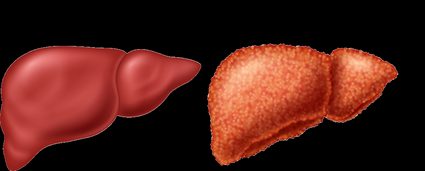Child Pugh Calculator
The Child-Pugh calculator allows you to sum up information about your patient with cirrhosis of the liver - both biochemical parameters as well as your observations. The Child-Pugh score classifies the patient into one of three categories, giving you a clue about the severity of the condition, prognosis and mortality. You will also find a note about the West Haven criteria on hepatic encephalopathy, part of the assessment. Although nowadays, for transplant purposes, we consider the MELD score superior (check the MELD calculator for more), the Child-Pugh score still .
We try our best to make our Omni Calculators as precise and reliable as possible. However, this tool can never replace a professional doctor's assessment.
How to use the Child-Pugh calculator?
Child-Pugh calculator will calculate the points on its own; all you have to do is to fill in the required fields:
- Bilirubin - check the patient's last bilirubin measurement. You can enter the result in two units, so you don't have to worry about converting.
- Albumin - input the correct albumin range from the patient's last measurement.
- INR - choose the right INR range. In cirrhosis of the liver, this parameter can be severely high.
- Ascites - this is the parameter that requires subjective evaluation. Remember to take into consideration the treatment response.
- Hepatic encephalopathy grade - see the section below to read a detailed description of the grades.
The main purpose of the Child-Pugh score is to assess a patient with liver cirrhosis, but it is also used for liver cancer - e.g., in the Barcelona clinic liver cancer staging system.
Hepatic encephalopathy staging - West Haven criteria
One of the parameters assessed in the Child-Pugh score is the stage of hepatic encephalopathy. Encephalopathy means disease or disorder of the brain, and the adjective 'hepatic' indicates that a liver malfunction causes the condition. The primary phenomenon leading to hepatic encephalopathy is hyperammonemia, a very high concentration of the ammonia in the blood.
The West Haven criteria help us to determine which grade of encephalopathy the patient has:
Grade | Clinical findings |
|---|---|
Grade I | Confusion; anxiety or euphoria; altered sleep rhythm; problems with simple math problems |
Grade II | Personality change; inappropriate behavior; disorientation for a time; speech impairment; dyspraxia, asterixis |
Grade III | Gross disorientation; somnolence / semistupor; responsive only to strong stimuli; confusion |
Grade IV | Coma; unresponsive to stimuli |
Child-Pugh score interpretation
The points scored in Child-Pugh calculator assign the patient to the one of three categories, A, B, or C. The mildest form of the cirrhosis of the liver belongs to category A, while the worst and deadliest is the category C. You can also see what the typical survival rate of patients in particular category is.
Points | Class | Description | One-year survival | Two-year survival |
|---|---|---|---|---|
5-6 | A | Well-functioning liver | 100% | 85% |
7-9 | B | Significant functional compromise | 80% | 60% |
10-15 | C | Decompensation of the liver | 45% | 35% |
Besides the patient's state evaluation, the Child-Pugh score may be used to determine . Patients in class A are generally safe patients for elective surgery. Class B persons should first receive treatment to optimise their state. Major surgeries are contraindicated for patients group C.
If you want to know more about diseases of the liver, check also:
- Serum-ascites albumin gradient - SAAG calculator; and
- Non-alcoholic fatty liver disease - NAFLD fibrosis score calculator.
A note for the patient - what is cirrhosis of the liver?
This Child-Pugh calculator is designed to be used when a patient suffers from cirrhosis of the liver. Liver cirrhosis means pathological scarring of the liver tissue. Since healthy tissue (the liver cells are called hepatocytes) is replaced with scar tissue, the liver function slowly deteriorates. It isn't a disease sensu stricto - it's a condition that develops because of a disease, and there are many possible causes.

Most common causes of cirrhosis of the liver are:
- Viral hepatitis - hepatitis B and C (other viruses are very rare);
- Alcohol induced liver disease;
- Non-alcoholic steatohepatitis - a state when fat tissue starts to build into the liver tissue; the primary cause is being overweight;
- Primary biliary cholangitis;
- Primary sclerosing cholangitis;
- Autoimmune hepatitis; and
- Metabolic disorders, like Wilson's disease or hemochromatosis.